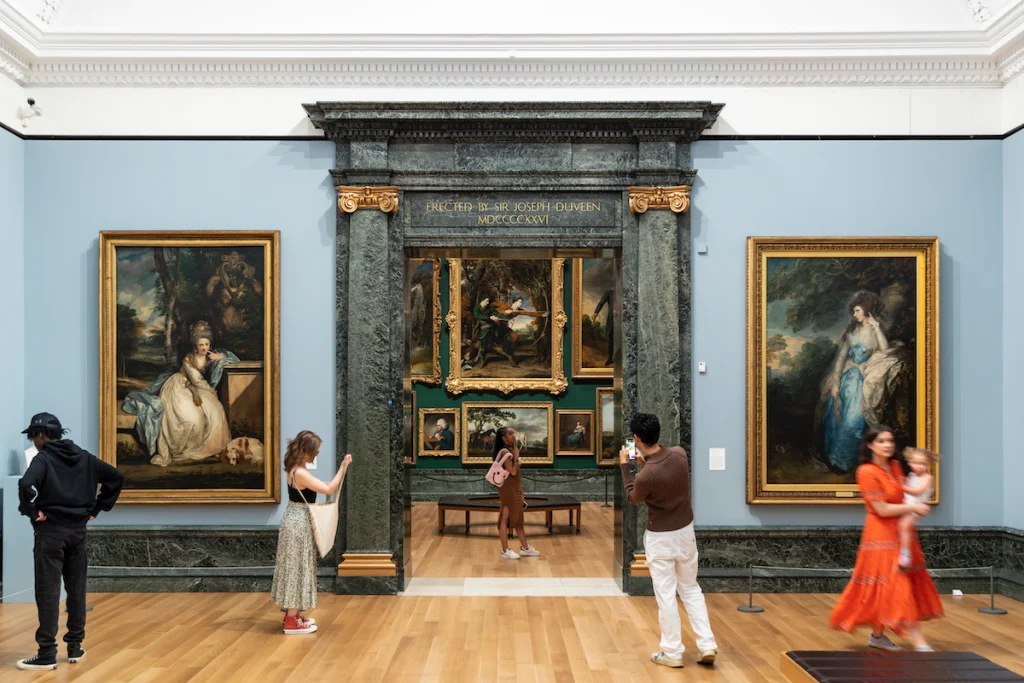Pratiksha Shome
According to a historian, Tate Britain “censored” his suggestion for a gallery rehang that would include a J. M. W. Turner picture in the city of London’s current rehang. Marcus Rediker, a historian, alleged in a London Review of Books article that Tate Britain finally rejected his proposal to display Turner’s A Disaster at Sea, painted about 1835, next to a piece that would more directly illuminate the history of governmental violence in England. This past autumn, in advance of the launch of the rehang in May, Rediker severed connections with the museum after Tate failed to do so.
Rediker described the incident as a “disturbing episode” and tweeted, “I resigned in protest when one of my curatorial decisions was censored by the museum.”
Rediker served as the temporary curator of the Turner gallery at Tate Britain for five years, according to a biography on his website. However, a spokesman for Tate Britain disputed that. Instead, the museum said that he was one of many historians hired to look for artefacts that might be interpreted as reactions to the works on display.
An inquiry for comment from Rediker was not answered. The Slave Ship (2007), which Alice Walker previously called a “transformative” read, is one of many works about slavery he has published. He is a history professor at the University of Pittsburgh.
Because it gave women and artists of colour more attention than the museum had in the past, Tate Britain’s rehang attracted a lot of attention in the UK. This has caused division in the British press. Apollo criticised the rehang as “tokenism,” while the Telegraph called it “a hectoring history lesson.” Observing that “Today’s Tate Britain is where art goes to sleep,” Jonathan Jones of The Guardian said, while the Evening Standard referred to it as a “masterclass.”
Many of the rehang’s critics focused on Tate Britain’s increased emphasis on links between collection pieces and the slave trade, which caused controversy even before the public could witness the presentation.
According to the London Review of Books article, Turner’s A Disaster at Sea, which some believe to be a representation of the 1833 sinking of a ship carrying 108 female convicts and 12 children, had prompted Tate Britain to contact Rediker for assistance in coming up with a response. Tate Britain is currently located in the former site of a jail that housed female criminals before they were shipped to Australia, notwithstanding the fact that the Amphitrite did not set sail from that area.
Rediker allegedly suggested putting a “punishment box,” a tool used to punish female prisoners on ships like the Amphitrite, next to the Turner. But the museum apparently refused to do so since it is unclear which ship is featured in A Disaster at Sea. The museum was concerned about “triggering” views and the punishment box’s “domineering presence,” according to the London Review of Books.
The director of Tate Britain, Alex Farquharson, said in a statement to ARTnews that “the historic rooms in the rehang include several vitrines of images and artefacts selected by curators, as well as responses by contemporary artists, intended to surface hidden histories.” “I invited Marcus to be one of these curators, but unhappily one of his ideas — to create an interactive recreation of a torture device — was neither an artwork nor a historic object, and it would have posed a number of unsolvable logistical issues for an art museum. I continued to back his other ideas, and his work generally—as well as all of our conversations about the rehang—was motivating.
Source: ARTnews





